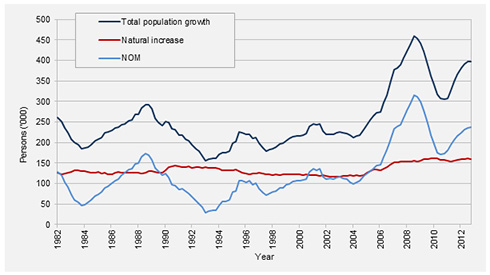Many people in the Anglo world and now Europe may ask where does the current transnational white nativist or white nationalist ideology, promoting eugenics and immigration restrictions, come from?
Many would suggest that the fulcrum of ideology or ideas has been the ‘most influential unknown man in America’ (New York Times) John ‘passive eugenics’ Tanton, along with his network of anti-immigrant organisations informing the White House, also the Social Contract Press which Tanton was central in founding, and his influence also bisecting the Koch influenced ‘bill mill’ ALEC American Legislative Exchange Council.
In earlier days Tanton along with Paul Ehrlich, with support from Rockefeller Bros., Ford and Carnegie Foundations, founded ZPG Zero Population Growth in the US (according to the Washington Post 1977) then later in Australia and UK; becoming Sustainable Population Australia while in the U.K., Population Matters and Migration Watch.
The Social Contract Press has been described by Southern Poverty Legal Center (SPLC) as:
‘The Social Contract Press (TSCP) routinely publishes race-baiting articles penned by white nationalists. The press is a program of U.S. Inc, the foundation created by John Tanton, the racist founder and principal ideologue of the modern nativist movement. TSCP puts an academic veneer of legitimacy over what are essentially racist arguments about the inferiority of today’s immigrants.’
SPLC also describes John Tanton as:
‘John Tanton was the racist architect of the modern anti-immigrant movement. He created a network of organizations – the Federation for American Immigration Reform (FAIR), the Center for Immigration Studies (CIS) and NumbersUSA – that profoundly shaped the immigration debate in the U.S.’
Tanton, his network and associated people, including Dr. Robert ‘Bob’ Birrell and Dr. Katherine Betts (whom interviewed Jean Raspail author of Steve Bannon’s favourite tract ‘Camp of the Saints’) have been influential in informing Australia’s immigration policy, post White Australia policy. Further, TSCP also have a representative via John Tanton in Australia, Denis McCormack who explains below in a TSCP article.
From The Social Contract Press:
‘Fond Memories of John Tanton: The ‘Grand Master of Life’
By Denis McCormack Volume 30, Number 1 (Fall 2019)
Issue theme: “John Tanton: His Life and Legacy (1934-2019)”
While transiting an Australian airport in early 1990, not long before our Federal Election, Dr. John Tanton picked up a discarded newspaper left on a nearby transit lounge seat. Inside the paper John spotted a brief news item in The Age (a prominent newspaper), written by the late Pamela Bone, a “respected” feature and op/ed writer of long standing. Her work often reflected her firmly held support for high levels of immigration and welcoming more “refugees.” She was a classic Social Justice Warrior (SJW)…..
……From the airport, John posted a quick note to Bone, enclosing his contact details, and asking her to pass them along to me. This she eventually did. I soon wrote to John, thanking him for his interest, and enclosed some AAFI materials. By return mail I received a large package full of TSC, FAIR, CIS, and ZPG publications. John invited me to keep him informed about our doings Down Under and to tell him what we tried to popularize resistance to high levels of immigration-fueled population growth.
In 1992, John invited me to attend the annual Writers’ Workshop (WW), which was held in San Diego, California that year. I have attended eight of these in-gatherings for like minds. On the morning of my trip to San Diego, I met Dr. Tanton and Professor Garrett Hardin having breakfast, and asked them, straight off the bat, if they had ever read The Camp of the Saints. “YES” they both responded, and we three brothers in arms discussed this essential book in our common cause…..
…….Prolific reader that he was, John had read All for Australia (Methuen Haynes, 1984) by Australia’s pre-eminent historian, Professor Geoffrey Blainey, whom I knew and was able to introduce to him. John was later interviewed by Terry Lane, a well-respected long-term ABC-Melbourne presenter. Lane was unafraid to call for reducing immigration, and was a critic of the multiculturalism policy mania. This made his interview with John easy to enjoy.
In 1992 John invited me to serve as The Social Contract’s Australian correspondent, and am happy to remain so today.’
For more blogs and articles about Australian politics, demography, immigration, population growth, populist politics and white nationalism click through.

